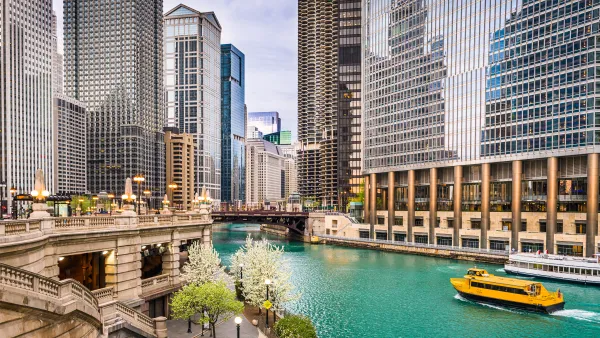Cities have been designed for user experience (UX) for millennia, and contemporary UX designers have plenty to learn from planners, according to a recent article in Fast Company.

Writing for Fast Company, Tom Seiple reports on a lesson recently acquired on a visit to the Alfama district in Lisbon, which was originally formed in 1200 BCE:
It shares, more or less, the same characteristics and elements of any modern city. Despite the centuries of time that separate them and clear differences in scale, Chicago and Alfama share many of the same core elements. They both have roads, businesses, homes, places of worship, public art, neighborhood squares, parks, schools, and much more. They may look exceptionally different in terms of their form and scale, but at the end of the day, Alfama’s churches, markets, and alleyways perform the exact same functions as the same spaces in Lagos, London, Beijing, Mumbai, Los Angeles, or any other major modern metropolis.
The tradition goes back even further into history, writes Seiple, to the oldest known city, Çatalhöyük. “In the nearly 10,000 years—as far as we are aware—that mankind has been building cities, the same common elements have always existed, albeit in various forms and scales,” writes Seiple.
Nothing shared from the article so far will come as a surprise to Planetizen readers, but Seiple soon provides a twist: the lessons from cities, ancient to contemporary, can be applied to software design. The article draws on examples of urban form (referencing Frank Lloyd Wright) and the image of the city (referencing Kevin Lynch).
In addition to the article linked below, Seiple promises another article soon about how lessons of good and bad urban design can be applied to software UX.
FULL STORY: Ancient cities have lessons UX/UI designers can use right now

National Parks Layoffs Will Cause Communities to Lose Billions
Thousands of essential park workers were laid off this week, just before the busy spring break season.

Retro-silient?: America’s First “Eco-burb,” The Woodlands Turns 50
A master-planned community north of Houston offers lessons on green infrastructure and resilient design, but falls short of its founder’s lofty affordability and walkability goals.

Delivering for America Plan Will Downgrade Mail Service in at Least 49.5 Percent of Zip Codes
Republican and Democrat lawmakers criticize the plan for its disproportionate negative impact on rural communities.

Test News Post 1
This is a summary

Test News Headline 46
Test for the image on the front page.

Balancing Bombs and Butterflies: How the National Guard Protects a Rare Species
The National Guard at Fort Indiantown Gap uses GIS technology and land management strategies to balance military training with conservation efforts, ensuring the survival of the rare eastern regal fritillary butterfly.
Urban Design for Planners 1: Software Tools
This six-course series explores essential urban design concepts using open source software and equips planners with the tools they need to participate fully in the urban design process.
Planning for Universal Design
Learn the tools for implementing Universal Design in planning regulations.
EMC Planning Group, Inc.
Planetizen
Planetizen
Mpact (formerly Rail~Volution)
Great Falls Development Authority, Inc.
HUDs Office of Policy Development and Research
NYU Wagner Graduate School of Public Service





























